Depending how advanced its development is, it may be either a Product or a Service or both. The federal contribution for a qualifying project shall be at least 20 percent of the total cost of the demonstration project. Difference between SPI methodsAlso, there are lots of other methods and techniques, for example, OWPL, PRISMS, what is software process improvement SPIIMM, MESOPYME, …etc. Sometimes, the company has a high staff turnover which can be an issue to impose the SPI culture change and this can lead to endless SPI. SPI mainly consists of 4 cyclic steps as shown in the figure below, while these steps can be broken down into more steps according to the method and techniques used.

In case of SW-CMM, organisation is assessed on the scale 1-5 similar to CMM maturity levels. SW-CMM model allows organisation to verify capability for software development and maintenance; it focuses on project management. SW-CMM was intended to make available assessment of the processes enhancement with currently existing processes in the organisation to recognize setbacks for organisational processes and software quality improvements. An indispensable addition to your project management, software engineering or computer science bookshelf, this book masterfully illuminates and simplifies otherwise complex topics in ROI. It presents extremely simple, but overwhelmingly powerful metrics, models, and methods for designing professional business cases and provides hard-hitting economic justification. It explores the most popular international methods, models, and standards for software process improvement.
Proceedings of the Third International Workshop on Conducting Empirical Studies in Industry, CESI ’15
This inch-thick “pocket book” is easy to carry around and browse through when a busy requirements analyst has a few minutes to spare. You’re a technical professional, perhaps a programmer, engineer, or scientist. You are not a professional writer, but writing is part of your job (specs, manuals, proposals, lab reports, technical presentations, Web content, data sheets, and so on.) Welcome. It’s all you need to clearly communicate technical ideas to any audience–technical or nontechnical–and motivate them to act.
The paper presents a framework for SPI that is designed to utilise a range of improvement technologies and supports continuous and highly focused improvement over many projects, thus producing timely, cost-effective and tangible improvements for SMEs. The authors of this book explore the requirements of modeling of real-time systems. Traditional flowcharts assume processes occur sequentially, which although frequently elegant in design, are not rich enough to describe real-time systems. The descriptions of some of the models in the book will appear familiar to testers.
Proceedings of the 26th International Conference on Software Engineering, ICSE ’04
This is a short book intended to present elements of software quality systems. Correctly called a primer, it depicts and discusses multiple areas that need to be understood by Information Technology specialists and managers. The appendices, most of them IEEE Standards, point out the usefulness of IEEE work and documents in the standards and quality-assurance areas. This paperback book describes the authors’ top challenges of software testing and illustrates the tactics testers can use to avoid “lose-lose” situations. Each challenge is outlined with an overview, state of the practice, impact on testing, solutions to the challenge, guidelines for success and a plan of action. The summary chapter is a plan of action to improve testing, followed by four pages of resources.
- A Rough Order of Magnitude Estimate Quick Ref Guide was created to show specific software tool screens and related data used in each step.
- A practical field guide to the practice of scrum, an agile software project management methodology.
- At the managed level, it concentrates on product and process quality, detail measures are used to control the process, which include the quality management and process measurement and analysis.
- For software efforts, these activities include prototyping, modeling, coding, debugging, and user documentation.
- A well-designed, flexible software process improvement plan is critical to getting the right technology, people, and practices in sync and delivering at the highest level.
Established taxonomies of software testing and context-aware were used to characterize and interpret the findings. The results show that, although it is possible to observe the utilization of some software testing methods, few empirical studies are evaluating such methods when testing CASS. The selected technical literature conveys a lack of consensus on the understanding of context and CASS, and on the meaning of software testing. Furthermore, context variation in CASS has only been partially addressed by the identified approaches. They either rely on simulating context or in fixing the values of context variables during testing. We argue that the tests of context-aware software systems need to deal with the diversity of context instead of mitigating their effects.
ISO history/ ISO Standard[edit | edit source]
Software Factories significantly increase the level of automation in application development at medium to large companies, applying the time tested pattern of using visual languages to enable rapid assembly and configuration of framework based components. Aimed particularly at embedded designers and developers, this new book provides a sound foundation on the TPM, helping them to take advantage of hardware security based on sound TCG standards. It covers all the TPM basics, discussing in detail the TPM Key Hierarchy and the Trusted Platform Module specification. The book presents a methodology to enable designers and developers to successfully integrate the TPM into an embedded design and verify the TPM’s operation on a specific platform. Testing even a simple system can quickly turn into a potentially infinite task.
Total-quality philosophy is an approach to doing business that focuses all of the resources of the organization on the continual improvement of both quality and competitiveness. To this end, a total-quality organization will continually, improve its processes, people, and products. This approach is an effective way and, arguably, the only way to survive and prosper in a globally competitive environment. Defects play a large role in most software projects, ultimately leading to deficiencies and lost revenue. The ROI from Software Quality provides the tools needed for software engineers and project managers to calculate how much they should invest in quality, what benefits the investment will reap, and just how quickly those benefits will be realized.
Cultural influences and differences in software process improvement programs
We argue that a proper validation of any proposed approach to the strategic alignment of SPI should follow this technology transfer model. While TSP is a significant tool for teams in the software process, the fact that is use and application weren’t better understood suggests a lack of real world study of how the process could be applied. The Cusick study showed that the components of IPD-CMM that comprise the model are relevant to the success factors of implementing the integrated product development model. Generic practicesGeneric practices are a series of activities that apply to all processes. They address the management, measurement, and institutionalization aspects of a process.
Project Quality Management Demystified: A Guide to Excellence – Software Advice
Project Quality Management Demystified: A Guide to Excellence.
Posted: Thu, 18 May 2023 19:04:34 GMT [source]
Everything you need to know about VMware Workstation, from guest systems to network configuration. VMware software lets users run multiple operating systems simultaneously on one computer. Technically reviewed and developed in cooperation with VMware, Inc., The Book of VMware is a comprehensive guide to installing and running VMware.
Software development process in Jordanian small software development firms
This book presents an integrated framework for testing object-oriented software throughout the software engineering lifecycle. It discusses recipes for testing of requirements, designs, base classes, derived classes, and integrated systems. For each phase the authors describe objectives of testing, approaches used, testing techniques, ordered sets of activities, planned efforts, and acceptance criteria for transition to the next phase. The rapid rise in popularity of Extreme Programming has put the practice of software testing squarely in the spotlight of application development. At one time, testing was a neglected practice, a highly specialized activity that came as an afterthought as complex, code-intensive projects were rushed to completion. But in today’s world of escalating quality expectations, testing is a key component of the development process.

Reducing Risk with Software Process Improvements recommends the critical practices that aid in the successful delivery of software products and services. The author describes the observations that he made over a period of ten years in IT projects and organizations. He focuses on the areas of software development and maintenance, highlighting the most frequently encountered problems that occur due to poor processes. The Standard CMMI Appraisal Method for Process Improvement is an invaluable tool for organizations seeking to drive quantifiable improvements in systems and software engineering. CMMI is a well-known and standardized model for assessing and improving software and systems development processes. It can be used to guide process improvement across a project, a division, or an entire organization.
Tool support for systems emergence: A multimedia CASE tool
Through the use of patterns, the authors show that properly managed workflow can avert delays, morale problems, and cost overruns. “Ship It!” avoids current fashion trends and marketing hype; instead, readers find page after page of solid advice, all tried and tested in the real world. This book is a collection of tips that show what tools a successful https://globalcloudteam.com/ team has to use, and how to use them well. Developers will get quick, easy-to-follow advice on modern techniques and when they should be applied. His goal is for readers to understand the fundamental issues that surround performance and technology such that they can apply them to formulate a coherent customized approach to performance assurance.


